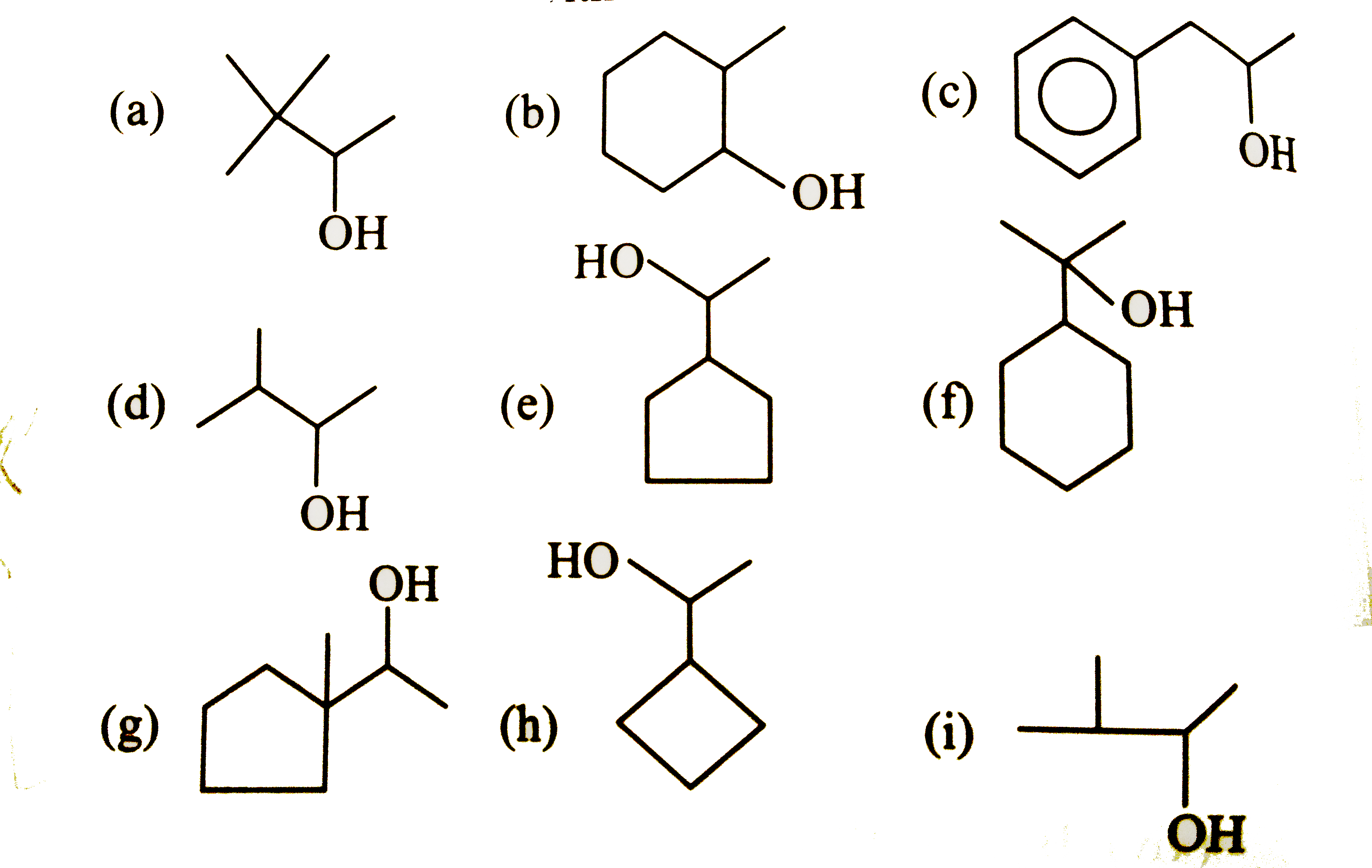The major product formed when 1, 1, 1-trichloro-propane is treated with aqueous potassium hydroxide is:
Propyne
1-Propanol
2-Propano
Propionic acid
The correct Answer is:D
To determine the major product formed when 1,1,1-trichloropropane is treated with aqueous potassium hydroxide, we can follow these steps:
1. Identify the Structure of 1,1,1-Trichloropropane:
- Propane has three carbon atoms. The structure of 1,1,1-trichloropropane can be drawn as:
Cl|Cl−C−CH2−CH3|Cl
- This shows that the central carbon (C) is bonded to three chlorine atoms (Cl) and one hydrogen atom (H).
2. Understand the Reaction with Aqueous Potassium Hydroxide (KOH):
- Aqueous KOH dissociates into K⁺ and OH⁻ ions. The OH⁻ ion acts as a nucleophile in this reaction.
3. Nucleophilic Attack:
- The OH⁻ ion will attack the electrophilic carbon atom that is bonded to the chlorine atoms. The carbon is electrophilic because the chlorine atoms are electronegative and withdraw electron density, making the carbon partially positive.
4. Formation of Alcohols:
- The nucleophilic attack by OH⁻ will lead to the substitution of one chlorine atom with a hydroxyl group (OH). The reaction can be represented as:
Cl−C(OH)−CH2−CH3+Cl
- This process can continue as the remaining chlorine atoms are also good leaving groups.
5. Formation of Propionic Acid:
- As the reaction proceeds, two more chlorine atoms can be replaced by hydroxyl groups. However, since we cannot have three hydroxyl groups on the same carbon, dehydration occurs. Water (H₂O) is eliminated, leading to the formation of a carbonyl group (C=O).
- The final product after the elimination of water will be propionic acid (C₂H₅COOH):
CH3−CH2−C(=O)−OH
6. Conclusion:
- The major product formed when 1,1,1-trichloropropane is treated with aqueous potassium hydroxide is propionic acid (C₂H₅COOH).
Final Answer:
The major product formed is propionic acid (C₂H₅COOH).
- Propane has three carbon atoms. The structure of 1,1,1-trichloropropane can be drawn as:
Cl|Cl−C−CH2−CH3|Cl
- This shows that the central carbon (C) is bonded to three chlorine atoms (Cl) and one hydrogen atom (H).
- Aqueous KOH dissociates into K⁺ and OH⁻ ions. The OH⁻ ion acts as a nucleophile in this reaction.
- The OH⁻ ion will attack the electrophilic carbon atom that is bonded to the chlorine atoms. The carbon is electrophilic because the chlorine atoms are electronegative and withdraw electron density, making the carbon partially positive.
- The nucleophilic attack by OH⁻ will lead to the substitution of one chlorine atom with a hydroxyl group (OH). The reaction can be represented as:
Cl−C(OH)−CH2−CH3+Cl
- This process can continue as the remaining chlorine atoms are also good leaving groups.
- As the reaction proceeds, two more chlorine atoms can be replaced by hydroxyl groups. However, since we cannot have three hydroxyl groups on the same carbon, dehydration occurs. Water (H₂O) is eliminated, leading to the formation of a carbonyl group (C=O).
- The final product after the elimination of water will be propionic acid (C₂H₅COOH):
CH3−CH2−C(=O)−OH
- The major product formed when 1,1,1-trichloropropane is treated with aqueous potassium hydroxide is propionic acid (C₂H₅COOH).
The major product formed is propionic acid (C₂H₅COOH).
Topper's Solved these Questions
- BOOK - DISHA PUBLICATIONCHAPTER - HALOALKANES AND HALOARENES EXERCISE - Exercise -2 : Concept Applicator28videos
HALOALKANES AND HALOARENES
- BOOK - DISHA PUBLICATIONCHAPTER - HALOALKANES AND HALOARENES EXERCISE - Exercise-1:Concept Builder(Topicwise)(TOPIC 3:)(Preparation and Properties of Halorenes)7videos
HALOALKANES AND HALOARENES
- BOOK - DISHA PUBLICATIONCHAPTER - GENERAL PRINCIPLES AND PROCESSES OF ISOLATION OF ELEMENTSEXERCISE - EXERCISE -1: CONCEPT APPLICATOR35videos
GENERAL PRINCIPLES AND PROCESSES OF ISOLATION OF ELEMENTS
- BOOK - DISHA PUBLICATIONCHAPTER - HYDROCARBONSEXERCISE - EXERCISE -2 CONCEPT APPLICATOR29videos
HYDROCARBONS
Similar Questions
Knowledge Check
- Question 1 - Select One
When chlroform is treated with aniline and potassium hydroxide we get:
Asweet odourBbitter almond odourCVery repulsive characteristic odourDnone of the aboe - Question 2 - Select One
Which is the major product formed when acetone is heated with iodine and potassium hydroxide ?
AAcetophenoneBIodoformClodoacetoneDAcetic acid - Question 3 - Select One
The major product formed when alkyl iodides is treated with excess of ammonia
Apriamry amineBSecondary amineCTertiary amineDquatermary ammonium salt
Chloroethane is reacted with alcoholic potassium hydroxide . The product formed is
View SolutionPropanal on treatment with dilute sodium hydroxides forms
View SolutionPropanal on treatment with dilute sodium hydroxide forms
View SolutionWhich is the major product formed when acetone is heated with iodine and potassium hydroxide ?
View SolutionThe hybridization state of carbon atoms in the product formed by the reactions of ethyl chloride with aqueous potassium hydroxide is .
View Solution


